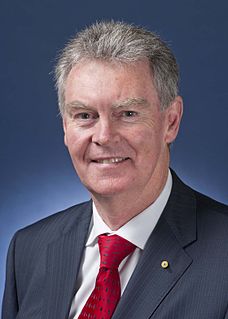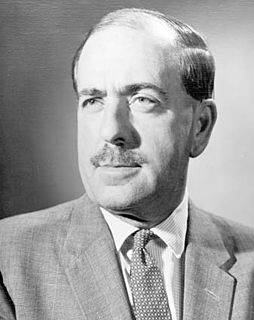
The Australian Secret Intelligence Service is Australia's foreign intelligence agency. ASIS was formed in 1952, but its existence remained secret even within the Government until 1972. ASIS is part of the Australian Intelligence Community responsible for the collection of foreign intelligence, including both counter-intelligence and liaising with the intelligence agencies of other countries. In these roles, ASIS is comparable to the British Secret Intelligence Service (MI6), Canada's Canadian Security Intelligence Service (CSIS) and the American Central Intelligence Agency (CIA).

Australian Signals Directorate is the Australian government agency responsible for foreign signals intelligence, support to military operations, cyber warfare, and information security. ASD is part of the Australian Intelligence Community. ASD's role within UKUSA Agreement is to monitor SIGINT in South and East Asia. The ASD also houses the Australian Cyber Security Centre.

The Defence Intelligence Organisation (DIO) is an Australian government military intelligence agency responsible for strategic intelligence and technical intelligence assessments, advising defence and government decision-making on national security and international security issues, and the planning and conduct of Australian Defence Force operations. The DIO does not collect intelligence or conduct covert action, but works on defence economics, transnational terrorism, and WMD.
The Commonwealth Police (COMPOL) was the federal law enforcement agency in Australia between 1917 and 1979. A federal police force was first established in 1917, and operated under different names and in some periods as multiple organisations. In late 1979, the Commonwealth Police and Australian Capital Territory Police were merged to form the Australian Federal Police (AFP).
The 1949 Australian coal strike was the first time that Australian military forces were used during peacetime to break a trade union strike. The strike by 23,000 coal miners lasted for seven weeks, from 27 June 1949 to 15 August 1949, with troops being sent in by the Ben Chifley Federal Labor government to the open cut coal mines in New South Wales on 28 July 1949, with the workers returning to work, defeated, two weeks later.
The Australian Protective Service (APS) was an Australian Commonwealth law enforcement agency which existed between 1984 and 2004. The APS was created by the separation of the Protective Service component of the Australian Federal Police (AFP) into a new agency based upon recommendations contained in the Stewart Royal Commission of Inquiry into Drug Trafficking. It was initially responsible for protecting personnel and property of the Australian government; foreign diplomatic missions and Internationally Protected Persons (IPPs); and the provision of custodial services at immigration detention centres. From 1990 the APS commenced providing Counter Terrorist First Response duties at certain security-designated airports including the specialist Bomb Appraisal Officer function and, following the terrorist attacks of 11 September 2001, deployed Air Security Officers on board Australian registered commercial aircraft. Close Personal Protection (CPP), or bodyguard, functions were never provided by the APS; where this has been a Commonwealth responsibility, the function is provided by the AFP.
The Australian Geospatial-Intelligence Organisation (AGO) is an Australian government intelligence agency that is part of the Department of Defence responsible for the collection, analysis, and distribution of geospatial intelligence (GEOINT) in support of Australia's defence and national interests. The AGO is one of six agencies that form the Australian Intelligence Community.
The Australian Intelligence Community (AIC) and the National Intelligence Community (NIC) or National Security Community of the Australian Government are the collectives of statutory intelligence agencies, policy departments, and other government agencies concerned with protecting and advancing the national security and national interests of the Commonwealth of Australia. The intelligence and security agencies of the Australian Government have evolved since the Second World War and the Cold War and saw transformation and expansion during the Global War on Terrorism with military deployments in Afghanistan, Iraq and against ISIS in Syria. Key international and national security issues for the Australian Intelligence Community include terrorism and violent extremism, cybersecurity, transnational crime, the rise of China, and Pacific regional security.
The Department of Defence is a department of the Government of Australia charged with the responsibility to defend Australia and its national interests. Along with the Australian Defence Force (ADF), it forms part of the Australian Defence Organisation (ADO) and is accountable to the Commonwealth Parliament, on behalf of the Australian people, for the efficiency and effectiveness with which it carries out the Government's defence policy.
The Department of the Prime Minister and Cabinet (PM&C) is an Australian Government public service central department of state with broad ranging responsibilities, primary of which is for intergovernmental and whole of government policy coordination and assisting the Prime Minister of Australia in managing the Cabinet of Australia. The PM&C was established in 1971 and traces its origins back to the Prime Minister's Department established in 1911.

The Australian Security Intelligence Organisation Act 1979 is an Act of the Parliament of Australia which replaced the Australian Security Intelligence Organisation Act 1956, which had established the Australian Security Intelligence Organisation (ASIO) as a statutory body. ASIO is the counter-intelligence and security agency of Australia, which had been established in 1949 by Prime Minister Ben Chifley's Directive for the Establishment and Maintenance of a Security Service under the executive power of the Constitution, under the control of the Director-General of Security and responsible to the Attorney-General.

The Agenzia Informazioni e Sicurezza Esterna, commonly known as AISE and formerly known as SISMI, is the foreign intelligence service of Italy. Operating outside Italy the organisation protects Italy's regional interests mainly through the use of HUMINT. Counterparts in other countries include the UK's MI6, the United States' CIA, Germany's BND, and France's DGSE.
The Department of Supply and Development was an Australian government department that existed between April 1948 and March 1950.

The National Security Committee of Cabinet (NSC) is the peak decision-making body for national security of the Commonwealth of Australia. It is a committee of the Australian Government Cabinet of Ministers though decisions of the NSC do not require the endorsement of the Cabinet.

The National Intelligence Coordination Committee (NICC) is a peak intergovernmental officials-level body of the Government of Australia responsible for the development and co-ordination of the Australian Intelligence Community in accordance with the National Security Committee of Cabinet. The NICC is chaired by the Director-General of the Office of National Intelligence.
The Department of Home Affairs is the Australian Government interior ministry with responsibilities for national security, law enforcement, emergency management, border control, immigration, refugees, citizenship, and multicultural affairs. The portfolio also includes federal agencies such as the Australian Federal Police, Australian Border Force and the Australian Security Intelligence Organisation. The Home Affairs portfolio reports to the Minister for Home Affairs The Hon. Peter Dutton MP and is led by Secretary of the Department of Home Affairs Mike Pezzullo.
The Australian Cyber Security Centre (ACSC) is an Australian Government intergovernmental and interagency hub responsible for cybersecurity including analysing, investigating and reporting cyber threats and coordinating national security capabilities and operations for incidents of cybercrime, cyberterrorism, and cyberwarfare. The ACSC is hosted by the Australian Signals Directorate but based at the Australian Security Intelligence Organisation headquarters in the Ben Chifley Building. The Centre is led by the National Cyber Coordinator, overseen by the Cyber Security Operations Board, and is the joint responsibility of the Minister for Defence and the Minister for Home Affairs.









